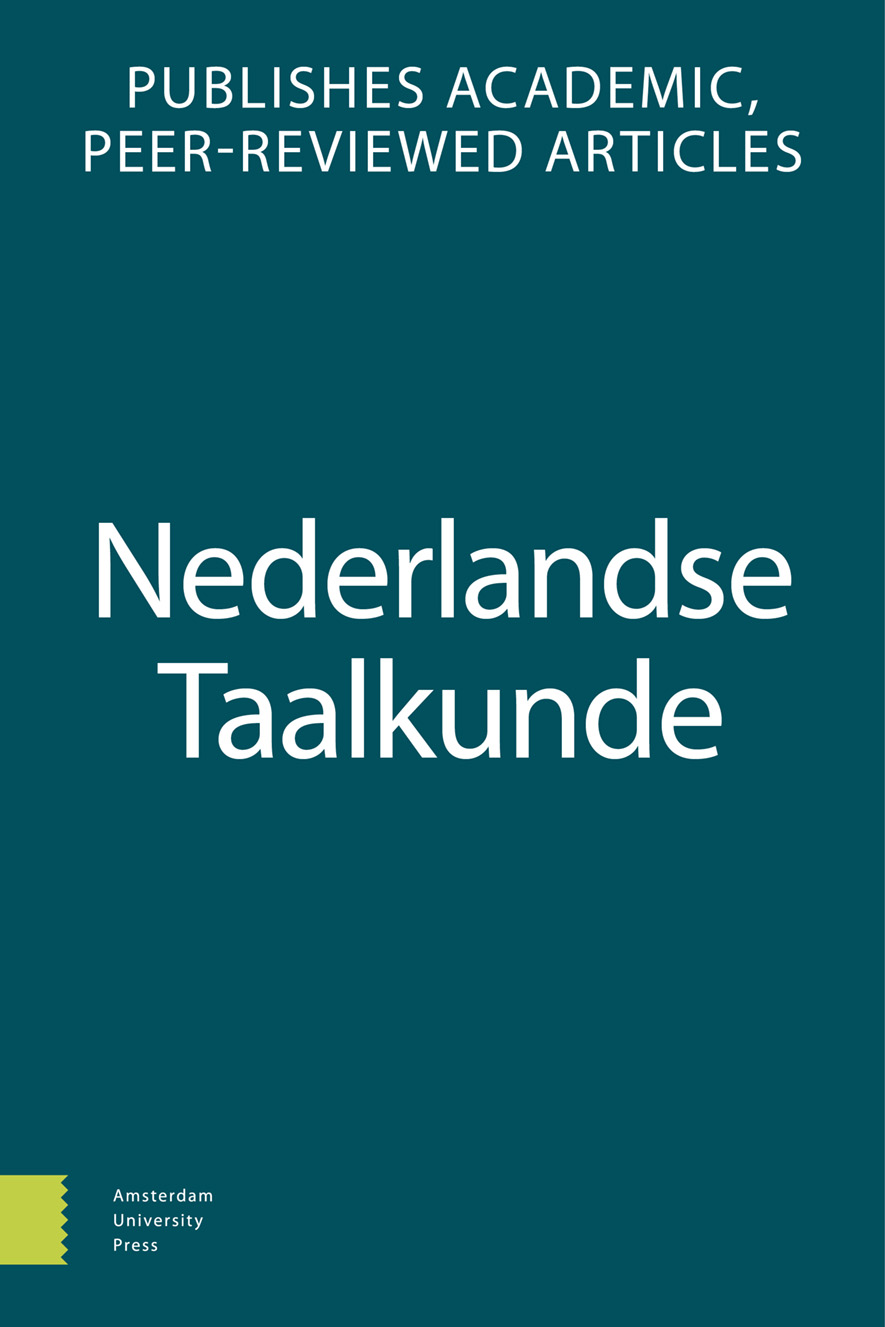-
oa ‘Onvervreemdbaar bezit’ verschillend benaderd
- Amsterdam University Press
- Source: Nederlandse Taalkunde, Volume 26, Issue 1, Apr 2021, p. 121 - 131
-
- 01 Apr 2021
Abstract
In this paper I explain the difference between the notions possessive dative and possessive accusative as used by me and other linguists like Vandeweghe (e.g. 1986 and 1987) and the notions dative and accusative inalienable possessors as used in Broekhuis et al. (2015). It is not so much the difference in the descriptive system I want to focus on, but the difference in aim. Broekhuis et al. want to specify the syntactic encoding of ‘inalienable possession’ and come to the conclusion that the possessor of the inalienable possession is always the referent of an indirect object, be it on different syntactic levels. I want to explain why this is the case. This can be done by showing that the complex predicates in inalienable possession constructions are comparable to the dative verbs in constructions with a regular indirect object, due to the fact that they contain a constituent referring to inalienable possession. Our descriptions have much in common and if we see them as complementary, they can profit from each other.


